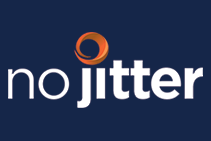A recent Frost & Sullivan research report highlights numerous opportunities in the North American Hosted IPT and UCC Services Market.
My colleague Elka Popova recently published her latest research on the hosted IPT and UCC services markets. Clients can download the full report on frost.com. Here's a quick look at some of the highlights:
• In 2013, the North American hosted IP telephony and UCC services user base grew by 30.5 percent to reach 5 million users, adding 1.2 million net new users since year end 2012. Revenues (including hosted applications and calling minutes, but excluding access charges) also grew at a healthy rate of 32.9 percent as demand increased and average revenues per user remained relatively stable.
• Market growth will remain steady from 2013 to 2020, at compound annual growth rates of 27.4 percent in terms of installed users and 29.2 percent in terms of revenues (excluding access). Even though growth rates will gradually decline year-over-year due to the larger installed base, the number of annual net new users will increase consistently throughout the forecast period.
• Growth will be driven by continued demand among under-served small and mid-size businesses (SMBs) and emerging demand among larger, distributed organizations with a significant number of remote and mobile employees. Growing customer confidence in VoIP and cloud technologies will also boost adoption.
• The large installed base of premises-based solutions, along with continued customer concerns over cloud security and reliability, will curb growth in the near and medium terms. Other factors that will delay adoption include customer confusion due to the fragmented competitive landscape with little differentiation among service provider offerings; and the lack of a strong market leader to validate the value proposition of hosted IP communications.
• Average revenues per user (ARPU) will remain stable in spite of price pressures at the low end thanks to the adoption of advanced services such as instant messaging (IM) and presence, soft clients, video and Web collaboration, mobile clients and contact center solutions. Increasingly, service providers will differentiate through the user interface and the ability to integrate with third-party communications and productivity applications.
• Service providers will continue to pursue mergers and acquisitions to accelerate growth and leverage synergies for greater profitability. They will also seek to enhance their channel capabilities to extend market reach and improve customer service and support.
• Solutions based on multi-instance platforms will rapidly gain traction and increasingly take share away from multi-tenant platform-based solutions, as providers pitch the security and customization benefits of the former. Customers will also choose multi-instance solutions so they can re-use existing terminals or integrate with existing infrastructure based on the same vendor technology.
• The competitive landscape will remain fragmented for the next few years. Incumbent vendors and telcos will use hosted communications as both a defensive and an offensive strategy as evolving customer needs shift demand from premises-based solutions to the cloud, and from legacy telco services to next-generation IP-based communications.







